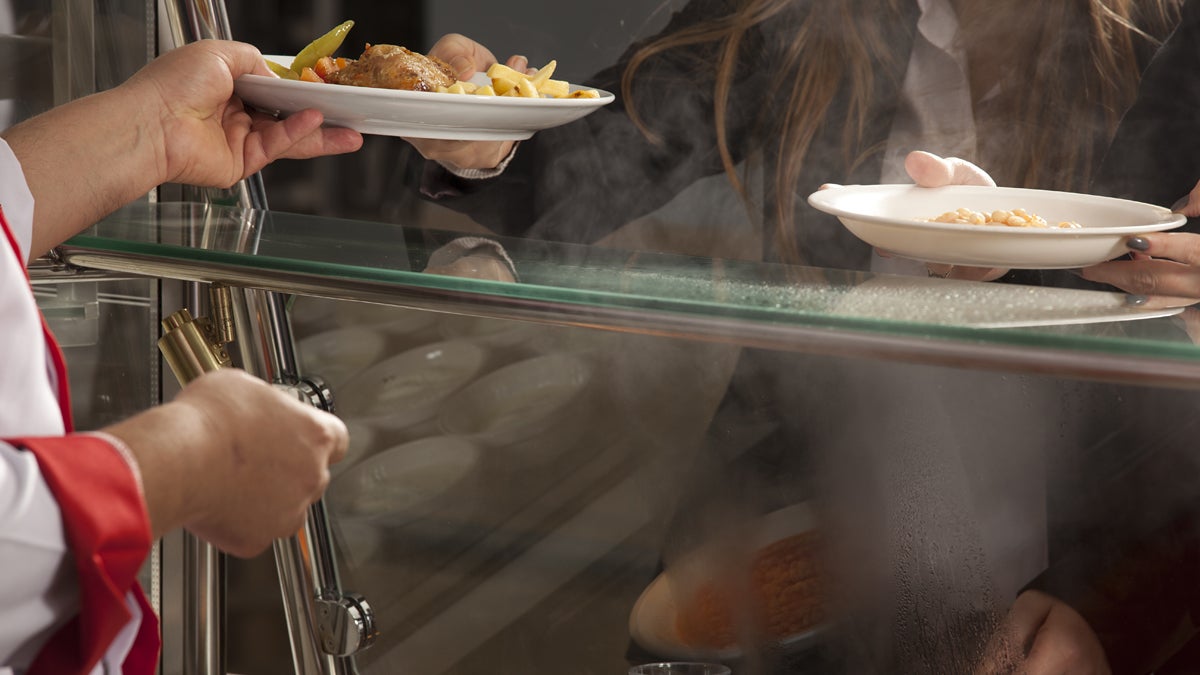Process of presenting healthy school lunch options can win kids over
 File photo via ShutterStock) " title="school_cafeteria1200" width="1" height="1"/>
File photo via ShutterStock) " title="school_cafeteria1200" width="1" height="1"/>
Students wait in a cafeteria line for school lunch. (File photo via ShutterStock)
Some New Jersey school districts report that switching to healthier food has hurt food service revenues.
But some national experts say it’s possible to make healthy options pay off.
Sometime we forget that kids are consumers with choice, according to registered dietitian Luanne Hughes, who says school lunches should be served with that in mind. The industry now has a toolbox of easy, low-cost strategies to market and make healthy food appealing to children, she said.
“A lot of it is just placement on the cafeteria line,” said Hughes an associate professor and science educator at Rutgers Cooperative Extension. “Placing them closer to the cash register. Using better lighting. Presenting them in attractive serving dishes. Creative signs.”
Hughes has worked with nine New Jersey counties to roll out the federal nutritious-food requirements.
Her group gave kids a chance to taste-test foods then vote on their favorites. Hughes says even roasted squash with herbs can be a winner, if children have some exposure — and say — before a new item goes on the lunch menu.
“Kids are excited about something like soda or chips because they see it presented on television or a magazine,” she said. “We don’t do that with fruits or vegetables, we just assume that they get it.”
Food prep can also make a difference, Hughes said. Younger children, for example, often aren’t interested in a whole apple, but if you slice it, kindergartners and first-graders might be more tempted to try, she said.
“We found that food service revenue — on average — typically stayed the same, or even increased when districts implemented healthier standards,” said Jessica Donze Black, director of the Kids’ Safe and Healthful Foods Project for the Pew Charitable Trusts. The project conducted a health-impact assessment on the national nutrition standards.
“Many of the schools in the field have figured out ways of doing this that actually improves revenue,” Black said. “That’s because when you implement the food standards in the vending machines or in the a la carte line, kids are more likely to buy a school meal.”
Black urges school districts to hang on — and be inventive — if they suffer a dip in sales after transitioning to healthier options.
“Given time, and given energy to try things a little bit differently—do some trial and error, they are able to come back from that,” Black said.
WHYY is your source for fact-based, in-depth journalism and information. As a nonprofit organization, we rely on financial support from readers like you. Please give today.

